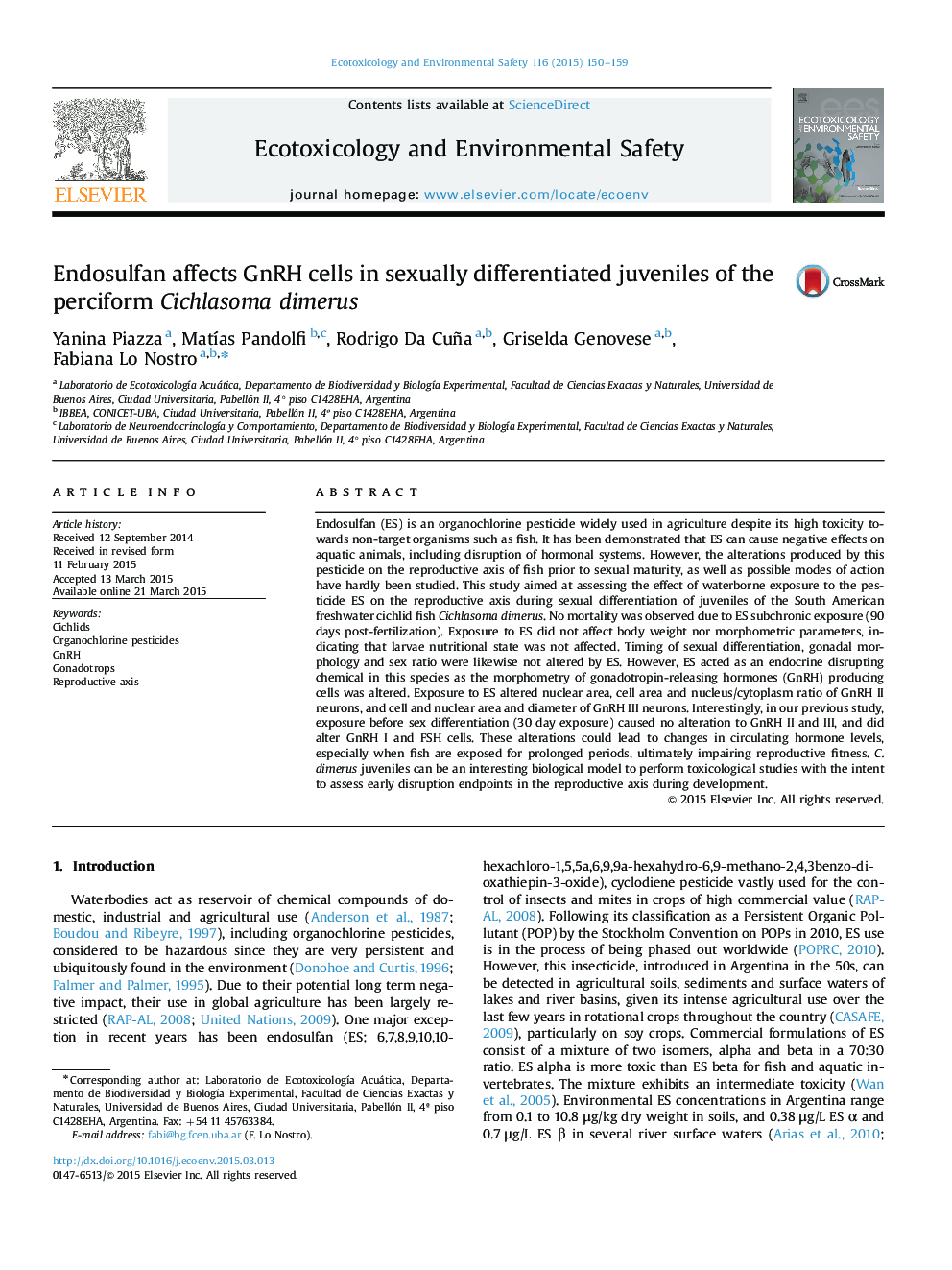| کد مقاله | کد نشریه | سال انتشار | مقاله انگلیسی | نسخه تمام متن |
|---|---|---|---|---|
| 4419648 | 1618947 | 2015 | 10 صفحه PDF | دانلود رایگان |

• ES acted as an endocrine disrupting chemical in Cichlasoma dimerus juveniles.
• Gonadal differentiation and sex ratio were not altered by ES exposure in 90 dpf fish.
• Morphometry of GnRHs producing cells was differentially altered by ES exposure.
• ES exposure did not affect the morphometry of GnRH I, βFSH and βLH producing cells.
Endosulfan (ES) is an organochlorine pesticide widely used in agriculture despite its high toxicity towards non-target organisms such as fish. It has been demonstrated that ES can cause negative effects on aquatic animals, including disruption of hormonal systems. However, the alterations produced by this pesticide on the reproductive axis of fish prior to sexual maturity, as well as possible modes of action have hardly been studied. This study aimed at assessing the effect of waterborne exposure to the pesticide ES on the reproductive axis during sexual differentiation of juveniles of the South American freshwater cichlid fish Cichlasoma dimerus. No mortality was observed due to ES subchronic exposure (90 days post-fertilization). Exposure to ES did not affect body weight nor morphometric parameters, indicating that larvae nutritional state was not affected. Timing of sexual differentiation, gonadal morphology and sex ratio were likewise not altered by ES. However, ES acted as an endocrine disrupting chemical in this species as the morphometry of gonadotropin-releasing hormones (GnRH) producing cells was altered. Exposure to ES altered nuclear area, cell area and nucleus/cytoplasm ratio of GnRH II neurons, and cell and nuclear area and diameter of GnRH III neurons. Interestingly, in our previous study, exposure before sex differentiation (30 day exposure) caused no alteration to GnRH II and III, and did alter GnRH I and FSH cells. These alterations could lead to changes in circulating hormone levels, especially when fish are exposed for prolonged periods, ultimately impairing reproductive fitness. C. dimerus juveniles can be an interesting biological model to perform toxicological studies with the intent to assess early disruption endpoints in the reproductive axis during development.
Journal: Ecotoxicology and Environmental Safety - Volume 116, June 2015, Pages 150–159